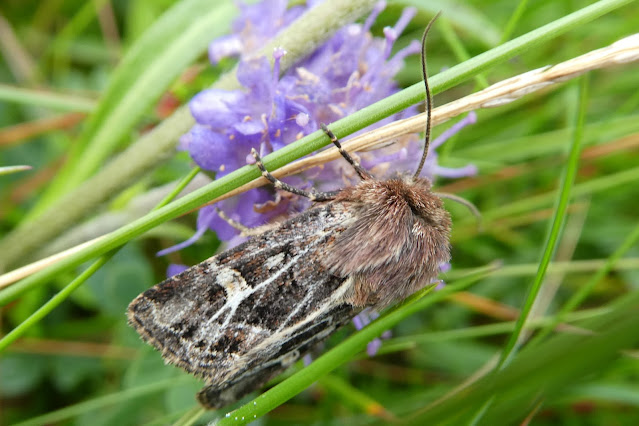The past week or so has seen plenty of natural lows in the British Isles: the UK is experiencing more wildfires; one in six species are at risk of extinction in Great Britain; a person chopped down a tree (for some reason this is worse than lots of people elsewhere chopping down lots of trees); oh, and the go-ahead has been given to extract more gas and oil from the North Sea, single-handedly driving a coach and horses through any plan to meet our climate targets. It is all rather depressing, and I struggled to think of how to lift the mood. Signing online petitions helps a little, but travelling over 500 miles to join an actual demonstration in London is clearly not carbon-neutral, never mind the financial cost. Oh well, there's always the Autumn vole survey to do for the Orkney Native Wildlife Project, so that will have to suffice.
Our designated site is a couple of 1km transects on Mull Head in Deerness. Several potential dates for the survey came and went in a flurry of heavy showers and gale force winds, but eventually some slightly less horrendous weather allowed us the opportunity to head out to look for vole signs. Yes, yes, that's mainly poo, but at least it's wholesome volesome poo, not the sort of shite that comes out of Westminster.
Arriving in the car park at Mull Head, it was half full, a mix of tourists and locals making use of the same weather window which had tempted us out. A pair of Stonechats frequented the fence posts of the visitors' centre and a Skylark was sufficiently impressed with the improved meteorology to be lyrically ascending over a nearby pasture.
 |
| I mis-identified this moth as an Antler, but was soon corrected by the local insect forum that it was in fact a Haworth's Minor |
A peaty track took us over the hill to the second transect, but before we dropped down into the next valley, I happened to glance at my phone. A message had just popped up from the local cetacean group... three Minke Whales feeding between Mull Head and Auskerry! Honestly, they must've appeared as soon as we left the clifftop. As I communicated the news to Megan, the numbers kept ramping up... five Minke... seven Minke! Fortunately, we could still see this area of water from our vantage point and, although a long way away, we did indeed manage to spot said whales as they occasionally surfaced.
 |
| A lacewing and a woolly cuff |
The second transect was rather quiet on the vole sign front, but we were kept entertained by raptors, with a Merlin, a Peregrine and a Hen Harrier all putting in an appearance.


I take my metaphorical hat off to you both searching for vole poo. Hope the results were rewarding. Glad you saw the whales even from a distance. B x
ReplyDeleteIt's not the same as seeing an Orkney Vole, obviously, and it is difficult to describe the immense vicarious excitement which the discovery of their poo creates!
ReplyDeletePS We washed our hands often.
ReplyDelete